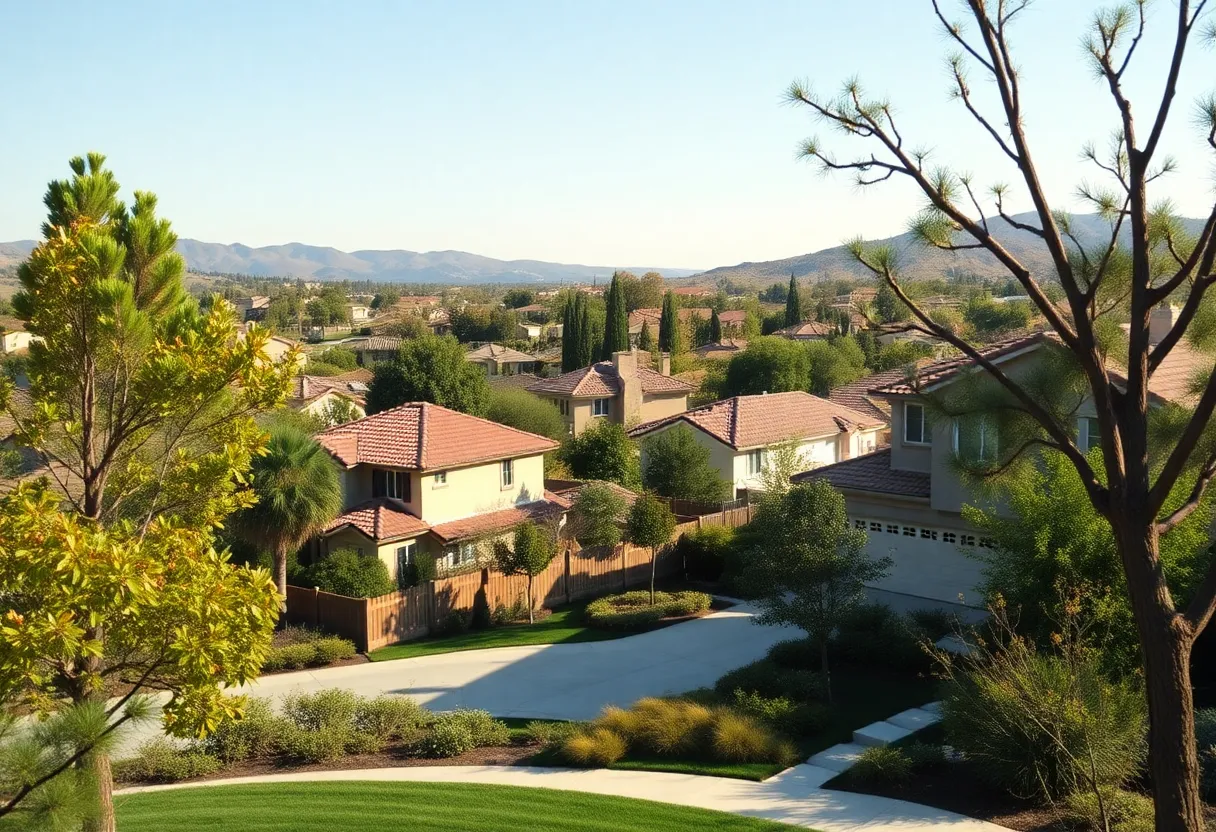News Summary
California officials are expanding wildfire building codes in response to increasing wildfire risks. New maps reveal 1.4 million acres of land classified as high risk, affecting homeowners in regions like Altadena. Starting in late July, Los Angeles County residents must comply with updated regulations that impact thousands of homes. As rebuilding begins, many homeowners are considering fire-resistant materials, though some are not legally required to invest in these enhancements. Community leaders advocate for comprehensive measures to ensure safety amid growing wildfire risks.
California Expands Wildfire Building Codes as Residents Begin Rebuilding
Officials in California are taking proactive measures to combat increasing wildfire risks by releasing new maps that extend the reach of wildfire building codes across the state. The updated maps reveal an additional 1.4 million acres land classified as being at high or very high risk for wildfires. This expansion emphasizes the significant challenges residents face as they begin the rebuilding process after experiencing devastating fires.
New Maps and Building Codes
In particular, areas affected by the Eaton Fire, which impacted Altadena, are feeling the ramifications of these updated regulations. Over 500 additional homes and buildings now fall under the wildfire building codes in this region, marking a crucial shift in rebuilding guidelines. Los Angeles County residents must adopt the new wildfire hazard zones by late July 2025. This timeline gives homeowners roughly four months to comply with stricter regulations before they come into full effect.
As of 2026, the building requirements will also extend to any properties classified under the “high” risk category of the wildfire maps. This move could result in about 1,000 more properties in the Eaton Fire area facing mandatory compliance with these building codes, if permitted. The current wildfire building codes follow Chapter 7A, which only applies to specific at-risk areas, leaving many homes in urban centers like Altadena without stringent requirements.
Rebuilding Amid Concerns
Homeowners who survived the recent wildfires have begun the rebuilding process. Many are considering using fire-resistant materials to enhance their homes’ resilience against future wildfires. However, a significant portion of property owners remains outside the designated wildfire zones and thus are not legally required to invest in these fireproofing measures.
Research indicates that using fire-resistant materials can substantially improve the likelihood that homes will survive a wildfire. Nonetheless, it’s important to note that approximately 7,800 buildings destroyed during the Eaton Fire are excluded from the newly expanded wildfire zones and will not be subject to the stricter building codes. Many property owners are rushing to finalize their rebuilding plans as they strive to avoid the impending regulations.
Community Reactions and Future Proposals
There is a significant level of anxiety among homeowners regarding whether to rebuild in these vulnerable areas and the extent to which fire-resistant materials fit into their budgets, especially given that insurance may not cover the additional costs associated with these enhancements. The emotional toll on affected households is evident, with recent polls revealing that 80% of voters in Los Angeles County favor stricter building codes, while 70% support more regulations limiting home construction in wildfire-prone areas.
Community leaders are advocating for resilient rebuilding strategies that not only address housing policies but also consider the environmental risks posed by wildfires. Stakeholders, including fire safety experts and insurance representatives, are calling for comprehensive measures to enhance fire safety and expand the fire zones. Proposals to improve enforcement of defensible space regulations, as well as landscaping requirements surrounding homes, are gaining traction.
Focus on Safety and Rehabilitation
The significance of updated wildfire hazard maps for urban planning has never been clearer, given the growing risks associated with climate change. Emphasis on vegetation clearing around homes in high-risk areas is crucial in strengthening community safety in the future.
As residents embark on the rebuilding process, a careful balance between implementing stringent safety measures and facilitating timely, affordable reconstruction practices will be necessary for affected families. Continued collaboration among community leaders, policymakers, and homeowners is essential to ensure that the challenges posed by wildfires are addressed comprehensively, paving the way for safer, fire-resistant homes in California.
Deeper Dive: News & Info About This Topic
Construction CA Resources
Fire-proofing Demonstration in Anaheim Highlights Risks of Outdated Home Construction Methods
Additional Resources
- NBC Los Angeles
- Los Angeles Times
- Pasadena Star-News
- Wikipedia: Wildfire
- ArchDaily
- Google Search: California Wildfire Building Codes
Author: Construction CA News
The CALIFORNIA STAFF WRITER represents the experienced team at constructioncanews.com, your go-to source for actionable local news and information in California and beyond. Specializing in "news you can use," we cover essential topics like product reviews for personal and business needs, local business directories, politics, real estate trends, neighborhood insights, and state news affecting the area—with deep expertise drawn from years of dedicated reporting and strong community input, including local press releases and business updates. We deliver top reporting on high-value events such as the Rose Parade, Coachella, Comic-Con, and the California State Fair. Our coverage extends to key organizations like the California Building Industry Association and Associated General Contractors of California, plus leading businesses in technology and entertainment that power the local economy such as Apple and Alphabet. As part of the broader network, including constructionnynews.com, constructiontxnews.com, and constructionflnews.com, we provide comprehensive, credible insights into the dynamic landscape across multiple states.




